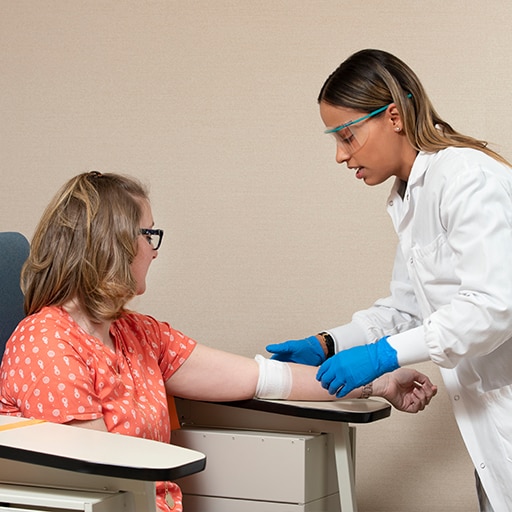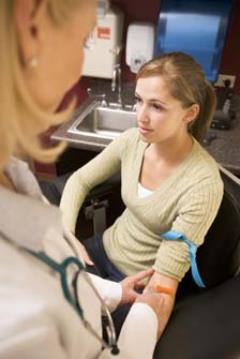Northeast Medical Institute - New Haven Campus Phlebotomy Course & Cna Class for Beginners
Northeast Medical Institute - New Haven Campus Phlebotomy Course & Cna Class for Beginners
Blog Article
Northeast Medical Institute - New Haven Campus Phlebotomy Course & Cna Class Things To Know Before You Buy
Table of ContentsA Biased View of Northeast Medical Institute - New Haven Campus Phlebotomy Course & Cna ClassNortheast Medical Institute - New Haven Campus Phlebotomy Course & Cna Class Can Be Fun For EveryoneNortheast Medical Institute - New Haven Campus Phlebotomy Course & Cna Class for BeginnersAbout Northeast Medical Institute - New Haven Campus Phlebotomy Course & Cna ClassThe Best Strategy To Use For Northeast Medical Institute - New Haven Campus Phlebotomy Course & Cna ClassHow Northeast Medical Institute - New Haven Campus Phlebotomy Course & Cna Class can Save You Time, Stress, and Money.
The usage of such devices should be gone along with by various other infection avoidance and control methods, and training in their use. Not all safety and security tools apply to phlebotomy. Before choosing a safety-engineered tool, individuals ought to thoroughly explore offered devices to determine their proper use, compatibility with existing phlebotomy practices, and effectiveness in safeguarding personnel and patients (12, 33).For settings with reduced resources, expense is a driving element in purchase of safety-engineered devices - Phlebotomy Classes. Where safety-engineered tools are not readily available, knowledgeable use a needle and syringe is appropriate. Unintentional direct exposure and particular information concerning an occurrence ought to be recorded in a register. Support services ought to be promoted for those who undertake accidental direct exposure.
Among the necessary markers of quality of care in phlebotomy is the participation and participation of the individual; this is mutually useful to both the wellness employee and the individual. Clear details either composed or spoken need to be offered to each person who undergoes phlebotomy. Annex F gives example message for clarifying the blood-sampling treatment to an individual. In the blood-sampling area for an outpatient division or facility, supply a comfortable reclining couch with an arm rest.
A Biased View of Northeast Medical Institute - New Haven Campus Phlebotomy Course & Cna Class
Guarantee that the indications for blood tasting are plainly defined, either in a composed protocol or in documented directions (e.g. in a lab type). Whatsoever times, comply with the approaches for infection avoidance and control provided in Table 2.2. Infection avoidance and control techniques. Accumulate all the devices needed for the treatment and area it within secure and easy reach on a tray or trolley, making sure that all the items are clearly noticeable.
Where the individual is adult and conscious, comply with the actions laid out listed below. Present on your own to the client, and ask the patient to state their complete name. Examine that the laboratory type matches the patient's identification (i.e. match the individual's information with the lab kind, to ensure exact recognition). Ask whether the license has allergic reactions, phobias or has ever before fainted during previous shots or blood attracts.
Make the individual comfy in a supine setting (preferably). Place a clean paper or towel under the person's arm. Talk about the test to be done (see Annex F) and acquire verbal approval. The client has a right to refuse an examination at any moment prior to the blood sampling, so it is essential to make sure that the individual has actually understood the treatment.
The Best Guide To Northeast Medical Institute - New Haven Campus Phlebotomy Course & Cna Class
Prolong the individual's arm and check the antecubital fossa or lower arm. Situate a vein of a good size that is noticeable, straight and clear.
DO NOT put the needle where veins are drawing away, since this enhances the chance of a haematoma. Situating the blood vessel will help in establishing the right dimension of needle.
Specimens from central lines bring a risk of contamination or incorrect laboratory test outcomes. It is acceptable, however not excellent, to draw blood specimens when very first presenting an in-dwelling venous device, prior to linking the cannula to the intravenous liquids.
Everything about Northeast Medical Institute - New Haven Campus Phlebotomy Course & Cna Class
Allow the area to completely dry. Failing to enable enough call time increases the risk of contamination. DO NOT touch the cleaned up site; in specific, DO NOT put a finger over the vein to direct the shaft of the subjected needle. It the website is touched, repeat the sanitation. Execute venepuncture as follows.
Ask the patient to develop a clenched fist so the veins are extra popular. Get in the blood vessel promptly at a 30 level angle or much less, and remain to introduce the needle along the vein at the most convenient angle of access - PCT Classes. When adequate blood has actually been gathered, launch the tourniquet prior to taking out the needle
The Basic Principles Of Northeast Medical Institute - New Haven Campus Phlebotomy Course & Cna Class
Withdraw the needle carefully and apply mild pressure to the website with a tidy gauze or completely dry cotton-wool sphere. Ask the patient to hold the gauze or cotton wool in position, with the arm extended and elevated. Ask the client NOT to bend the arm, because doing so creates a haematoma.

The Northeast Medical Institute - New Haven Campus Phlebotomy Course & Cna Class Ideas
Do not press the syringe bettor due to the fact that extra stress increases the risk of haemolysis. Where possible, maintain televisions in a rack and relocate the shelf towards you. Inject downwards right into the suitable coloured stopper. DO NOT get rid of the stopper since it will release the vacuum. If the example tube does not have a rubber stopper, inject extremely slowly into the tube as decreasing the pressure and rate used to move the sampling reduces the risk of haemolysis.

Report this page